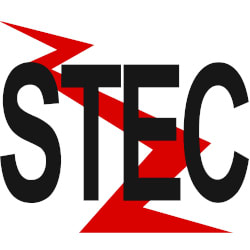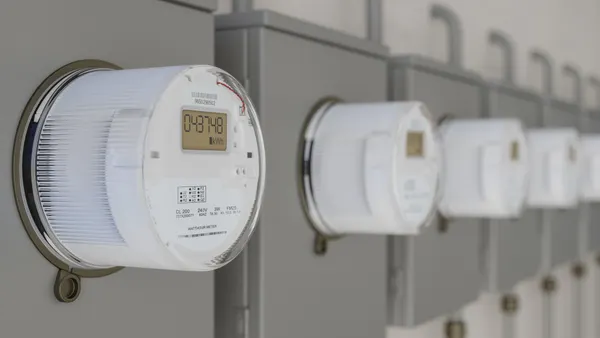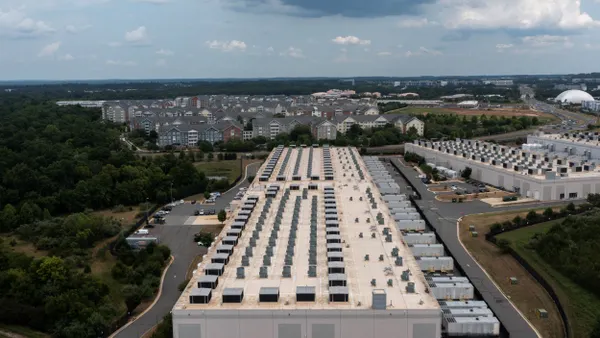The following is a contributed article by Ahmad Faruqui, a Principal with The Brattle Group.
Through Senate Bill 100, California is committed to having a power sector that relies exclusively on renewable energy resources by 2045. But renewable energy resources, such as solar and wind, are intermittent, and create a challenge to maintaining system reliability. Reliability can be maintained if load responds dynamically to changing system conditions.
Dynamic load flexibility means that when there is an abundance of supply, load rises to consume that supply, and when there is a deficiency of supply, load falls to accommodate that shortfall. Dynamic load flexibility can be achieved through dynamic pricing. Under this pricing mechanism, prices will rise when the system has a supply deficiency and prices will fall when the system has a supply surplus. In other words, dynamic pricing will allow the dynamic balancing of demand and supply and the preservation of reliability.
In California today, there are some 2.2 million customers receiving their electric service on Time-of-Use (TOU) rates. Some of them are on opt-out (default) TOU rates while others are on opt-in TOU rates. On an opt-out basis, SMUD has 542,000 customers on TOU rates and SDG&E has 670,000 customers on TOU rates. On an opt-in basis, PG&E has 515,000 customers on TOU rates and SCE has 500,000 customers on TOU rates.
Starting in October 2020, the latter two utilities, the largest in the state, will place all new connections on TOU rates. It’s expected that they will transition all their customers to opt-out TOU rates by 2025.
Thus, by that year, some 10 million customers will be receiving their electric service on TOU rates and California will have completed its long-awaited transition to opt-out TOU rates. It’s well known that TOU rates promote economic efficiency in the allocation of scarce resources, lower overall costs of providing electricity to customers, and enhance equity between customers.
TOU rates have gained widespread acceptance by several stakeholders in the state. They incentivize smart charging of EVs and let prosumers make the best use of their PV panels, which are increasingly being accompanied by battery storage.
An additional benefit is that they lay the foundation for rolling out technology-enabled dynamic pricing in the state. There are six reasons why California will need to have dynamic pricing in place by 2030.
Reason 1: California suffered a major energy crisis in 2000-01
One of the major reasons for the debacle was the absence of price-responsive demand. This meant that retail markets were disconnected from wholesale markets. When prices rose in wholesale markets, that increase was not passed on to retail markets. Customers kept on consuming the same amount of power as before, necessitating blackouts.
A group of economists from a variety of organizations including academe, think tanks and consulting firms issued a manifesto calling for the introduction of dynamic pricing in the state to prevent a recurrence of the energy crisis.
The California Public Utilities Commission (CPUC) initiated a docket on dynamic pricing, demand response and smart metering under the leadership of Mike Peevey. That docket remains open, but questions continue to be raised about whether Californians would understand and respond to dynamic pricing. Unless these are addressed, the state will be unable to progress toward dynamic pricing. The next several reasons address the feasibility question.
Reason 2: Californians understand and respond to dynamic pricing
To address these concerns, a stakeholder group led by the CPUC and the California Energy Commission, decided to conduct a pilot with dynamic pricing focused on residential and small commercial and industrial customers. The pilot was jointly carried out by the three investor-owned utilities in the state. It included some 2,500 customers and ran for two years.
The Statewide Pricing Pilot provided conclusive evidence that Californians accepted and responded to dynamic pricing. Using the results of the pilot, the three investor-owned utilities filed business cases for advanced metering infrastructure (AMI) to be put in place. Besides providing operational benefits to the utilities, AMI would enable dynamic pricing to be offered to customers.
The business cases garnered regulatory approval and AMI was rolled out by the three utilities. But the rollout of dynamic pricing was insipid, even though it had been shown to work in the Statewide Pilot. At some point, the conversation about pricing reform shifted from dynamic pricing to simple TOU rates.
Somehow it was considered necessary to conduct several additional pilots to see if customers understood and responded to TOU rates. Some of these experiments featured opt-in deployment while others featured opt-out deployment. They also featured different definitions of pricing periods.
TOU rates had been around for decades. In the 1950s, Great Britain implemented the Economy 7 tariff for customers with electric storage systems for space heating. France rolled out the tempo tariff in the mid-1960s for larger customers. It featured three different configurations of TOU rates, one for the winter peaking season, one for the summer season, and one for the spring and fall seasons.
TOU rates arrived in the U.S. in the late 1970s. Under the auspices of the Federal Energy Administration (later DOE), a dozen TOU pilots were carried out. Subsequently, some utilities began rolling out TOU rates. Most were opt-in. A few focused on large users were mandatory.
In the third decade of the 21st century, the time has come to move beyond TOU rates to dynamic pricing rates. But before that happens, a major objection has to be addressed. Will Californians be able to relate to something as innovative as dynamic pricing?
Reason 3: California is the Innovation Capital of the world
World class companies like Apple, Cisco, Facebook, Google, LinkedIn, Tesla and Twitter are located in the state. Just about everything new and exciting begins in California and then it sweeps the nation and eventually the entire globe. California contributes some 15% of the nation’s GDP. It has a “golden” opportunity to serve as a role model in the pricing of electricity for the rest of the nation.
Reason 4: Californians have already encountered dynamic pricing
Dynamic pricing is not anything new for Californians. As shown in the table below, they have already encountered it in many aspects of life from activities as routine as parking a car, going to watch a movie, watching sports and buying an airline ticket. There is no reason why they will not be able to understand dynamic pricing of electricity.
Reason 5: Enabling technologies are widely deployed in the state
The uptake of dynamic pricing can be enhanced by making it simple and coupling it with enabling technologies such as smart Wi-Fi thermostats and digital appliances. These are already widespread in the state, along with energy efficient LEDs and appliances, many of which are digital. PV panels, often paired with batteries, and EVs are being adopted at a rapid clip in the state, showing that customers are keen to manage their energy lifestyle. When it comes to new technology adoption, California is way ahead of the nation. With only 12% of the national population, California accounts for nearly 50% of all PV installations and nearly 50% of all EVs on the road.
In line with its desire to push the envelope on clean energy, California has enacted a law requiring that all new homes built in the state from 2020 onwards have solar panels on their roofs. Many homeowners are keen on buying zero energy home and thousands already exist in the state. Currently, solar customers are required to take their service on simple TOU rates and many customers with EVs take their service on simple TOU rates.
But since TOU rates will not capture the price variations that occur in wholesale markets when the grid is totally being supplied by green energy resources, it will be important to replace TOU rates with dynamic pricing.
Reason 6: By 2045, the grid will be supplied entirely by renewable energy resources
As noted earlier, Senate Bill 100 requires California’s grid to be 100% free of carbon emissions and be supplied by renewable energy resources by 2045. Solar and wind resources will dominate the resource mix. They are intermittent and will create significant reliability challenges for the grid. While storage systems of various kinds will help maintain reliability, it’s unlikely that they will be able to address them in their entirety.
There will be an urgent need for dynamic load flexibility 24/7 to help maintain system reliability at the least cost. One of the best ways to promote load flexibility is to deploy dynamic pricing as a default tariff by 2030. By combining dynamic pricing with enabling technologies, customers will be able to live their normal lives without discomfort or mental overload.
Conclusion
The state should begin offering dynamic pricing as an opt-in tariff in 2025 when default TOU deployment has been completed. It should let Californians gain experience and insights during the next five years and prepare them for the advent of a new era in 2030. In that year, dynamic pricing, integrated with enabling technologies, should be made the default tariff in the state.
Other options should be provided for customers who don’t want to take dynamic pricing. Those could include simple TOU rates and even flat rates, but they should be designed to prevent cross-subsidies from arising between customers.












